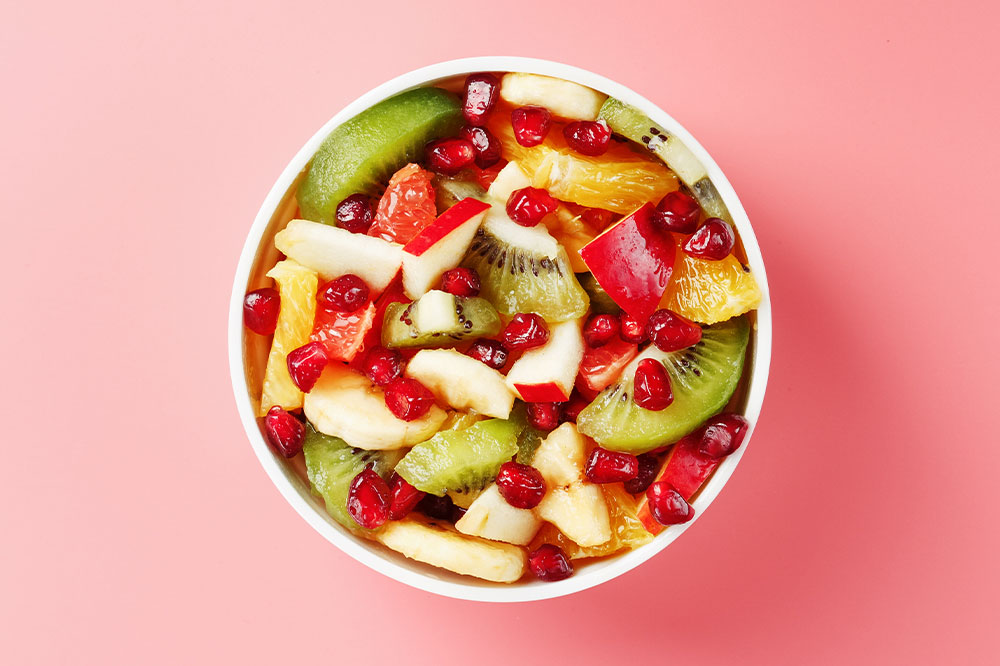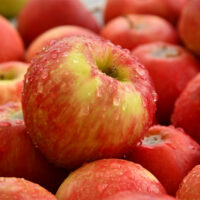Cancer management – Nutrition and treatment

Food plays an important role in maintaining daily health. Without proper nutrition, the body’s immune system will not be able to handle chronic disorders. Essential vitamins, minerals, and nutrients sourced from fresh foods and healthy cooking techniques can even help prevent and reduce the risk of cancer to some extent. The following changes in the food regime can help maintain a nutritional balance and improve quality of life, especially during treatment.
Healthy fruits and vegetables
Cancer mainly worsens due to the oxidative stress caused by free radicals. These unstable molecules destroy healthy cells in the vicinity and aggravate the symptoms of different types of cancer. Vegetables like carrots, Brussels sprouts, and squash are rich in carotenoids that promote anticarcinogenic benefits. Broccoli, spinach, and kale are also healthy options to consider among leafy greens. Additionally, citrus, lycopene, and antioxidant-rich fruits like orange, tomatoes, and assorted berries, especially strawberries, can lower the effect of oxidative damage. Certain polyphenols and allium compounds found in garlic, onions, leeks, chives, herbs, and other spices also help lower the risk of cancer-causing free radicals.
Foods rich in fiber
Constipation is a common discomfort experienced by many people during cancer treatment as a side effect of certain medications. Including more fiber in one’s daily food habits can help promote better digestion and bowel movements. Dietary fiber can be sourced from a variety of fruits, vegetables, legumes, and nuts. Kidneys, lentils, split peas, and chickpeas are loaded in these fibers. Barley, corn, bulgur, oats, spelt, and rye are excellent options in whole grains. These grains add bulk to the stools to promote better evacuation from the digestive tract. It is possible to introduce a lot of dietary fibers during breakfast, one of the most important meals of the day.
Foods to avoid
Eliminate most types of processed foods that contain unhealthy saturated and trans fats. Also, moderate the consumption of heavy red meats and limit the intake of refined carbohydrates. Cutting down on the sugar intake also helps in the long run. One must cook with less oil, fats, grease, salt, and spices.
CAR T-cell therapy for cancer
CAR T-cell therapy is a treatment done to harvest T-cells from the patient’s blood to modify its function genetically. Special receptors are added to these cells and reintroduced into the bloodstream by way of transfusion to combat cancer-causing cells. Millions of modified T-cells are programmed to bind to antigens and destroy the mutated cells.
Some people also suffer from gastrointestinal stromal tumors (GIST), a form of tumor that grows in the gastrointestinal tract. To GIST tumor patients, doctors may prescribe ripretinib as a treatment option today. The FDA recently approved this medication for the treatment of advanced GIST. Taking ripretinib as prescribed by the doctor may prevent the multiplication and spread of cancer cells. The medicine comes in the form of a tablet and is had once daily.
Bruton tyrosine kinase or BTK ibrutinib is also a type of inhibitor used for treating certain types of cancers like mantle cell lymphoma and chronic lymphocytic leukaemia. BTK signaling is a crucial step in B-cell development and immunoglobulin synthesis for managing these types of cancer. However, it has some side effects. Side effects of ibrutinib include atrial fibrillation, causing uneven and rapid heartbeat (arrythmia). Other side effects may include diarrhea, upper respiratory tract infection, bleeding, and fatigue. It is essential to be aware of the severity of the side effects for better management of the same.
Cancer immunotherapy treatments
There are multiple cancer immunotherapy treatment options for cancer. Cancer immunotherapy treatments are biological therapy that uses substances derived from living organisms to fight cancer. There are various types of immunotherapy treatments to treat cancer, like immune checkpoint inhibitors that obstruct immune checkpoints, making immune cells more effective against cancer. Another example is monoclonal antibodies, lab-created immune system proteins that bind to specific cancer cells.
In some cases of advanced cancers, Xofigo® can be prescribed for better management of the symptoms.
Xofigo® (radium 223 dichloride)
Xofigo® is used for treating prostate cancer in its advanced stages. The intravenous injection can be used in patients suffering from prostate cancer who are not benefitting from traditional hormonal and surgical treatments. Xofigo® contains radium 223 dichloride, which is a radiotherapeutic agent. It can be administered only at a healthcare facility under the proper supervision of technicians who are trained in radiation therapy.
For patience suffering from relapsed multiple myeloma, Pomalidomide is a good treatment option.
Pomalidomide
Pomalidomide is commonly sold under the brand name Pomalyst, an FDA-approved treatment option for people with relapsed or refractory multiple myeloma, which is a form of blood cancer. Pomalidomide is often used with dexamethasone to treat multiple myeloma patients who have received at least two other medicines that did not work well. Pomalidomide comes in capsules and is usually taken once per day. Side effects can include fatigue, low white blood cell count, anemia, nausea, constipation, and diarrhea.
It is interesting to know that doctors conduct extensive research to develop new cancer treatments.
Clinical trials for acute myeloid leukemia
Acute myeloid leukemia (AML) is another form of blood cancer. Various AML clinical trials are being conducted to develop better treatments for the condition. Health scientists are trying to determine if novel inhibitors like FLT3 and p53 or the newly-developed immunotherapies can kill leukemia cells. Doctors have conducted similar research for multiple myeloma (MM). For relapsing MM, doctors recommend ABECMA, a therapy where the patient’s T-cells are collected, modified in a laboratory, and injected back into the body to kill cancer cells.





